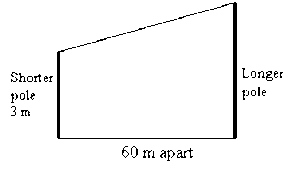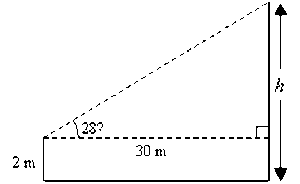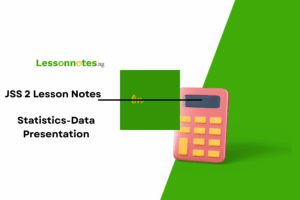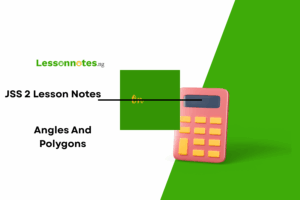Angles of Elevation And Depression JSS2 Mathematics Lesson Note
Download Lesson NoteTopic: Angles of Elevation And Depression
ANGLES OF ELEVATION AND DEPRESSION
What is the angle of elevation?
The angle of elevation is the angle between a horizontal line from the observer and the line of sight to an object that is above the horizontal line.
In the diagram below, AB is the horizontal line. q is the angle of elevation from the observer at A to the object at C.
BA

What is the angle of depression?
The angle of depression is the angle between a horizontal line from the observer and the line of sight to an object that is below the horizontal line.
In the diagram below, PQ is the horizontal line. q is the angle of depression from the observer at P to the object at R.

P Q
How to solve word problems that involve an angle of elevation or depression?
Step 1: Sketch the situation.
Step 2: Mark the given angle of elevation or depression.
Step 3: Use trigonometry to find the required missing length
Example:
Two poles on the horizontal ground are 60 m apart. The shorter pole is 3 m high. The angle of depression of the top of the shorter pole from the top of the longer pole is 20˚. Sketch a diagram to represent the situation.
Solution:
Step 1: Draw two vertical lines to represent the shorter pole and the longer pole.
Step 2: Draw a line from the top of the longer pole to the top of the shorter pole. (This is the line of sight).

Step 3: Draw a horizontal line to the top of the pole and mark the angle of depression.

Example:
A man who is 2 m tall stands on horizontal ground 30 m from a tree. The angle of elevation of the top of the tree from his eyes is 28˚. Estimate the height of the tree.
Solution:
Let the height of the tree be h. Sketch a diagram to represent the situation.

tan 28˚ =
h – 2 = 30 tan 28˚
h = (30 ´ 0.5317) + 2 ← tan 28˚ = 0.5317
= 17.951
The height of the tree is approximately 17.95 m.






















